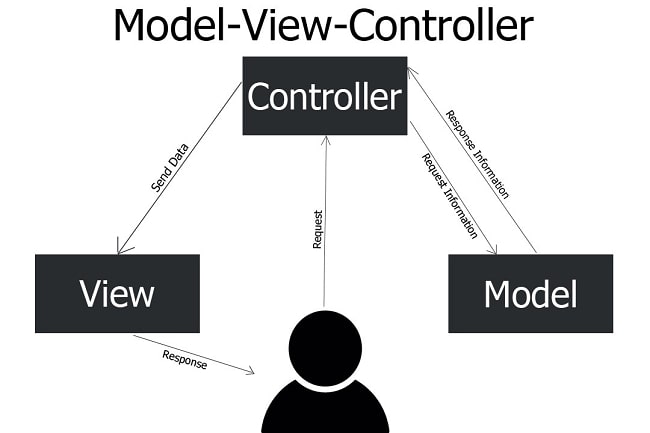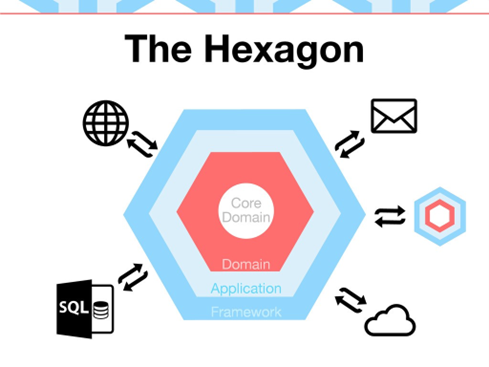
The world of software development is constantly evolving, and two concepts that have gained significant traction in recent years are containers and microservices. Containers allow developers to package and deploy applications in a lightweight and portable manner, while microservices provide a modular and scalable approach to software design. As organizations strive to keep up with changing market demands, these technologies have become increasingly popular. In this article, we will explore what containers and microservices are, how they work separately and together, and when to choose one over the other. By the end, you should have a better understanding of how these concepts can help you build more robust and adaptable software systems.
Outline:
I. What are Microservices?
II. What are Containers?
III. Microservices vs. Containers: Strengths and Differences
IV. How Microservices and Containers Work Together
V. When to Choose Containers vs. Microservices
VI. FAQs about Containers and Microservices
VII. Conclusion
I. What are Microservices?
Microservices, also known as microservice architecture, is an approach to software development where applications are broken down into smaller, independently deployable components. Each component, or microservice, is responsible for a specific business capability and can communicate with other microservices via APIs. This modular approach offers a number of benefits over traditional monolithic architectures, such as:
- Scalability: Microservices can be scaled horizontally, allowing developers to add or remove instances of a specific microservice as demand changes.
- Flexibility: Each microservice can be developed and deployed independently, allowing for faster iteration and more efficient use of resources.
- Resilience: If one microservice fails, it does not bring down the entire application. Instead, the other microservices can continue to function.
Many companies have adopted microservices architecture, including Netflix, Uber, and Amazon. For example, Netflix has hundreds of microservices that work together to deliver a seamless streaming experience to its users. By breaking down its application into smaller components, Netflix can more easily make updates and add new features without disrupting the entire system.
II. What are Containers?
Containers are a lightweight and portable way to package and deploy applications. A container is a self-contained, executable package that includes everything needed to run an application, including code, runtime, libraries, and system tools. Containers offer several benefits, including:
- Portability: Containers can run on any platform that supports the containerization technology, making it easy to move applications between development, testing, and production environments.
- Resource efficiency: Containers use less resources than traditional virtual machines because they share the host operating system's kernel. This means that multiple containers can run on the same host without interfering with each other.
- Consistency: Because containers include everything needed to run an application, developers can be confident that the application will behave consistently across different environments.
There are several containerization technologies available, including Docker, Kubernetes, and Podman. Docker is the most widely used containerization technology and provides a simple and efficient way to create, manage, and deploy containers. Kubernetes is a container orchestration platform that automates the deployment, scaling, and management of containerized applications. Podman is a newer alternative to Docker that aims to provide a more secure and lightweight containerization solution.
III. Microservices vs. Containers: Strengths and Differences
While microservices and containers are both popular software development concepts, they serve different purposes and have different strengths and weaknesses.
Microservices are ideal for complex applications with multiple components and dependencies. By breaking down the application into smaller, independently deployable services, developers can more easily scale and manage the system. Microservices are also flexible and can be developed and deployed independently, allowing for faster iteration and updates. However, microservices require a significant amount of design and planning upfront and can add complexity to the application.
Containers, on the other hand, are ideal for packaging and deploying applications in a consistent and portable way. Containers offer efficient resource utilization and allow developers to easily move applications between different environments. However, containers do not provide the same level of modularity and scalability as microservices and can be more challenging to manage at scale.
Despite their differences, microservices and containers can work together to provide even greater benefits. By deploying each microservice in a separate container, developers can easily scale and manage individual components of the system. Containers also provide a consistent environment for each microservice, making it easier to ensure consistency and reliability across the system.
IV. How Microservices and Containers Work Together
Containers can be used to deploy and manage microservices by encapsulating each microservice in its own container. This allows developers to easily scale and manage each microservice independently, while ensuring consistency and reliability across the system. Containers also provide a lightweight and efficient way to package and deploy microservices, making it easy to move applications between different environments.
To manage multiple containers at scale, developers can use container orchestration technologies such as Kubernetes. Kubernetes provides a platform for automating the deployment, scaling, and management of containerized applications. With Kubernetes, developers can easily deploy and manage large-scale microservice architectures, while ensuring high availability and resilience.
Kubernetes provides several key features for managing containerized microservices, including:
- Container scheduling and orchestration: Kubernetes automatically schedules containers to run on available resources and can scale the number of containers up or down based on demand.
- Service discovery and load balancing: Kubernetes provides a DNS service for discovering and connecting to individual microservices, and can automatically load balance traffic between them.
- Rolling updates and rollbacks: Kubernetes allows for rolling updates and rollbacks of individual microservices, making it easy to deploy new features or revert to previous versions.
By using containers and container orchestration technologies like Kubernetes, developers can easily deploy and manage complex microservice architectures, while ensuring high availability and scalability.
V. When to Choose Containers vs. Microservices
When deciding whether to use containers, microservices, or both, developers must consider several factors, including the complexity of the application, the size of the development team, the level of modularity required, and the desired level of scalability.
Containers are ideal for packaging and deploying applications in a consistent and portable way. They offer efficient resource utilization and allow developers to easily move applications between different environments. Containers are also well-suited for monolithic applications that do not require a high level of modularity or scalability. However, containers can be more challenging to manage at scale and do not provide the same level of modularity and scalability as microservices.
Microservices, on the other hand, are ideal for complex applications with multiple components and dependencies. By breaking down the application into smaller, independently deployable services, developers can more easily scale and manage the system. Microservices are also flexible and can be developed and deployed independently, allowing for faster iteration and updates. However, microservices require a significant amount of design and planning upfront and can add complexity to the application.
In some cases, it may be appropriate to use both containers and microservices. For example, developers may use containers to package and deploy individual microservices, while using a container orchestration platform like Kubernetes to manage the overall system. This approach can provide the benefits of both containers and microservices, while mitigating some of the challenges associated with each.
Ultimately, the decision to use containers, microservices, or both depends on the specific needs and requirements of the application and development team. By carefully considering the tradeoffs between using containers and microservices, developers can make an informed decision that best meets the needs of the project.
VI. FAQs about Containers and Microservices
Q: Is a Docker container a microservice?
A: No, a Docker container is not a microservice. Rather, a Docker container is a lightweight, standalone executable package that contains everything needed to run an application, including the code, runtime, system tools, libraries, and settings. While a Docker container can be used to deploy a microservice, it is not a microservice in and of itself.
Q: Is Kubernetes a microservice?
A: No, Kubernetes is not a microservice. Rather, Kubernetes is a container orchestration platform that provides a framework for deploying, scaling, and managing containerized applications. While Kubernetes can be used to manage microservices, it is not a microservice in and of itself.
A: No, Kubernetes is not a microservice. Rather, Kubernetes is a container orchestration platform that provides a framework for deploying, scaling, and managing containerized applications. While Kubernetes can be used to manage microservices, it is not a microservice in and of itself.
Q: Do microservices need containers?
A: No, microservices do not need containers to function. However, containers can be a useful tool for packaging and deploying microservices, as they provide a lightweight and portable way to encapsulate each microservice and its dependencies.
A: No, microservices do not need containers to function. However, containers can be a useful tool for packaging and deploying microservices, as they provide a lightweight and portable way to encapsulate each microservice and its dependencies.
Q: What is a container in microservices?
A: In the context of microservices, a container is a lightweight, standalone executable package that contains a single microservice and all of its dependencies. Containers can be used to encapsulate each microservice in a separate environment, providing a level of isolation and consistency that can be challenging to achieve with traditional monolithic architectures.
A: In the context of microservices, a container is a lightweight, standalone executable package that contains a single microservice and all of its dependencies. Containers can be used to encapsulate each microservice in a separate environment, providing a level of isolation and consistency that can be challenging to achieve with traditional monolithic architectures.
Q: What is the difference between microservices and Docker?
A: Microservices and Docker are two separate concepts. Microservices refer to an architectural style where an application is broken down into a collection of smaller, independently deployable services. Docker, on the other hand, is a containerization technology that allows developers to package and deploy applications in a consistent and portable way. While Docker can be used to deploy microservices, it is not a requirement for implementing a microservices architecture.
A: Microservices and Docker are two separate concepts. Microservices refer to an architectural style where an application is broken down into a collection of smaller, independently deployable services. Docker, on the other hand, is a containerization technology that allows developers to package and deploy applications in a consistent and portable way. While Docker can be used to deploy microservices, it is not a requirement for implementing a microservices architecture.
Q: How many microservices are in a container?
A: Typically, each container should only contain a single microservice and its dependencies. This allows each microservice to be deployed and scaled independently, while ensuring consistency and isolation between services. However, it is possible to run multiple microservices within a single container, though this can add complexity and reduce the flexibility of the system.
A: Typically, each container should only contain a single microservice and its dependencies. This allows each microservice to be deployed and scaled independently, while ensuring consistency and isolation between services. However, it is possible to run multiple microservices within a single container, though this can add complexity and reduce the flexibility of the system.
VII. Conclusion
In conclusion, containers and microservices are two powerful tools that can help organizations build more scalable, flexible, and resilient applications. While containers provide a lightweight and portable way to package and deploy applications, microservices enable developers to break down large applications into smaller, more manageable components. Together, these technologies can provide a powerful foundation for modern application development.
As with any technology, it's important to understand the tradeoffs and challenges associated with using containers and microservices. By carefully considering factors such as complexity, scalability, and resource usage, organizations can make informed decisions about when and how to use these technologies.



